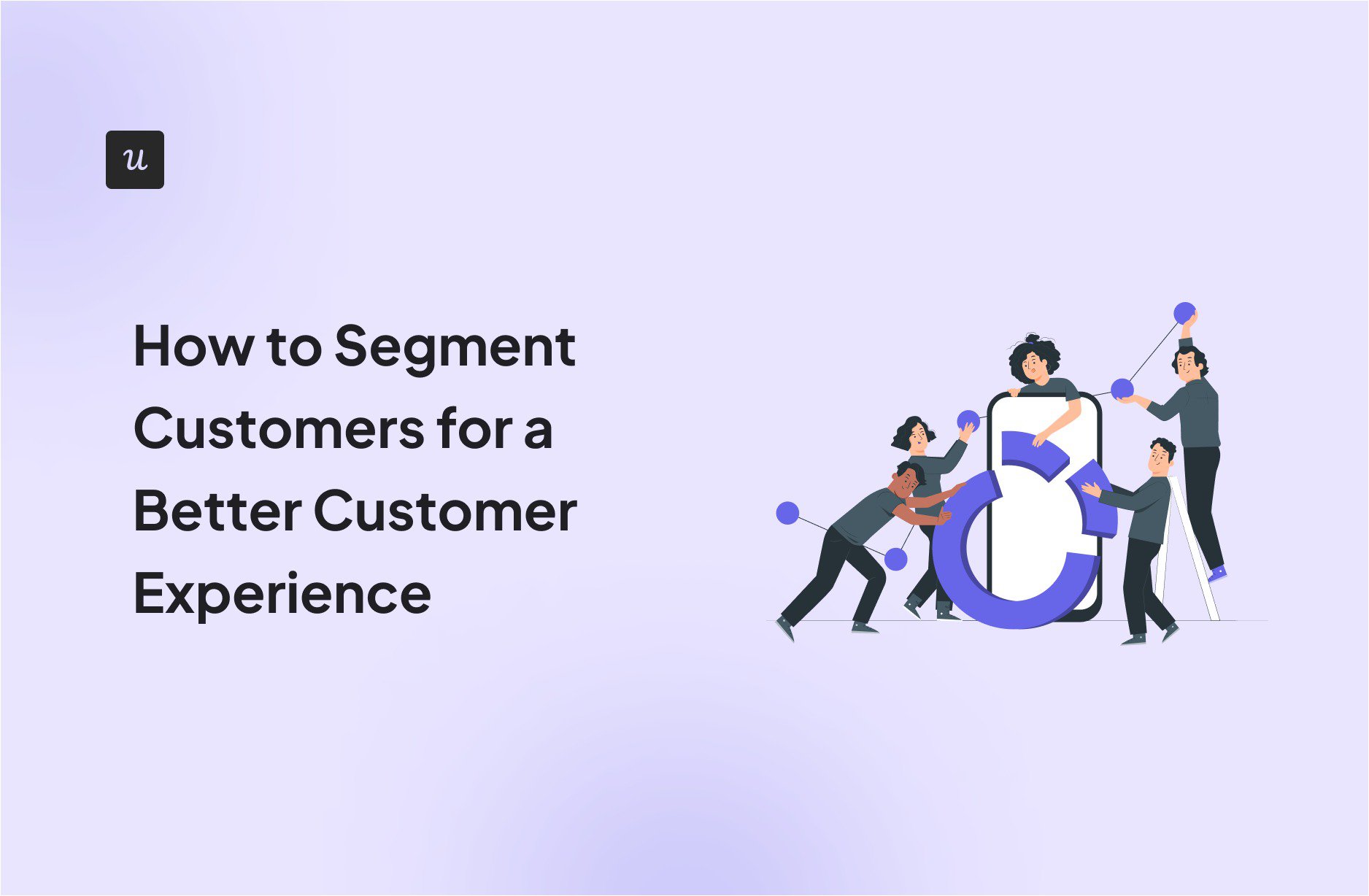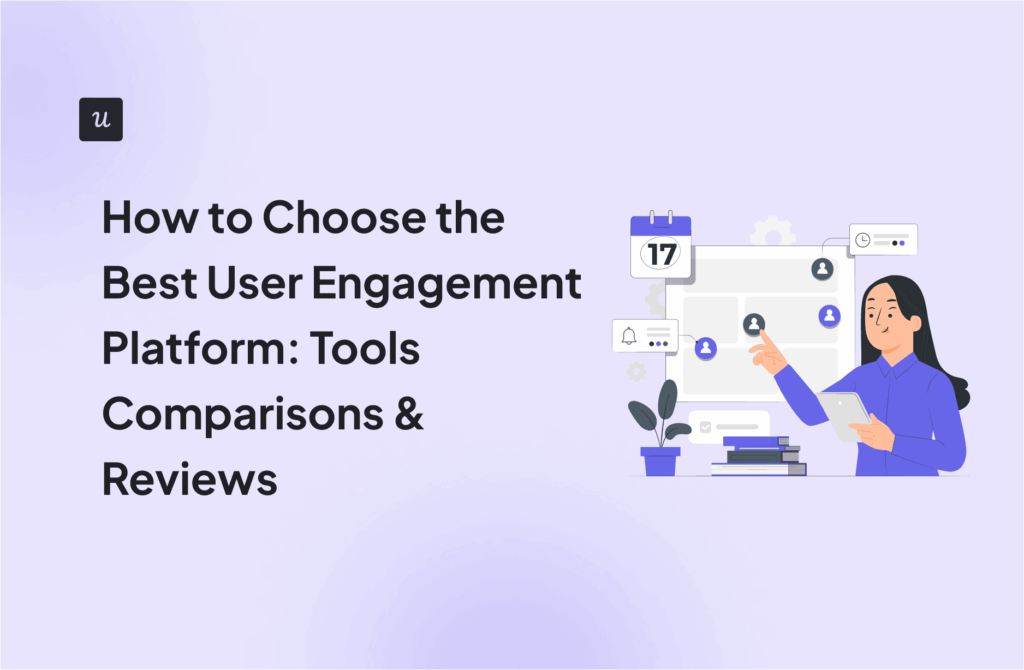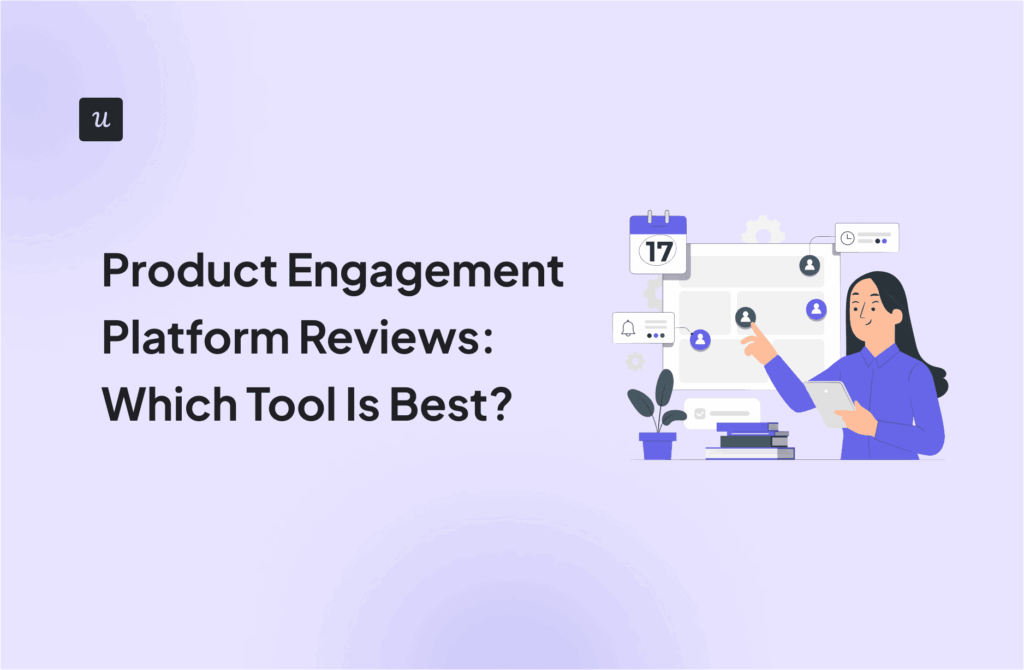
Wondering how to segment customers to increase their engagement with your SaaS product?
If yes, this guide is for you! It covers:
- What customer segmentation is and its benefits.
- Different segmentation types.
- How to create segments.
- Customer segmentation use cases.
Let’s get right to it.
Try Userpilot Now
See Why 1,000+ Teams Choose Userpilot

What is customer segmentation?
Customer segmentation is the process of grouping customers based on shared characteristics, like feature usage or language.
Segmenting customers enables teams to extract actionable insights from their behavior and offer personalized customer experiences.
The benefits of customer segmentation
Customer segmentation is essential for successful customer engagement along their journey with the product. Why?
Here are the main reasons:
- Improved customer understanding: Segmentation helps businesses understand the diverse needs and behaviors of their customer base.
- Enhanced marketing efficiency: By targeting specific market segments, companies can streamline their marketing efforts to make them more relevant to their pain points and needs. This leads to higher engagement and conversion rates.
- Increased product relevance: Segmentation enables businesses to tailor their products or features to meet the specific preferences of different customer groups. It translates into higher customer satisfaction and product adoption.
- Better customer retention: Personalized experiences foster greater customer loyalty. When customers feel understood and valued, they are more likely to stick with a brand.
- Opportunities for account expansion: Understanding the different segments allows businesses to identify and leverage opportunities for upselling and cross-selling, enhancing the customer’s lifetime value.
Different types of customer segmentation strategy
We distinguish a few customer segmentation models:
- Demographic segmentation: Groups customers based on attributes like age, gender, and education level.
- Geographic segmentation: Classifies customers according to their location, e.g. city, region, or country.
- Psychographic segmentation: Segments customers based on personality traits, lifestyles, and interests.
- Technographic segmentation: Divides customers based on their use of technology, including devices, software, and platforms.
- Behavioral segmentation: Focuses on customer actions such as purchase decisions, product usage, and feedback.
- Needs-based segmentation: Segments customers according to their specific needs and wants.
- Value-based segmentation: Groups customers by their economic value.
How to create a customer segment based on data
With the theory covered, let’s create some segments. In 5 steps.
1. Define your objectives
Start by clearly defining what you aim to achieve with your segmentation.
Let’s imagine you want to improve product adoption.
Setting this goal helps you decide what types of data you will collect and the customer segmentation model you will use.
For best results, use a goal-setting framework like SMART or OKRs. To ensure your objectives are specific, measurable, and realistic.
A good SMART goal would be ‘Improve product adoption by 3% by June 2024.’
2. Collect customer data
Gather relevant data to create effective customer segments by using various methods such as surveys and product usage analytics.
For example:
If you want to improve the adoption rate, define the adoption criteria for your product. Like ‘use feature X three times’ and ‘feature Y 5 times’. Create custom events in your analytics tool and track which users complete the event.
What if your product caters to different user personas?
First, define the adoption criteria for each of them. They’re likely be different because each of them uses the product to achieve different goals.
That’s not all.
You also need to collect the data to segment users by their use case to make the research relevant.
So, use a welcome survey to capture characteristics like roles or needs.

Welcome survey to segment customers.
3. Segment customers into groups based on different criteria
Using the data from the surveys and analytics, segment your users.
First, segment users based on their use cases to ensure that you’re comparing apples to apples.
Next, segment them by their in-app behavior. 2 segments, users who have completed the adoption events and those who haven’t, are a good start. It allows you to compare the behavior of the two groups, e.g. by conducting path analysis.
For more granular insights, you can create further segments. For example, the users who completed one adoption event but not the other.

4. Create different in-app strategies for different customer segments
Once you have segmented your users, develop tailored in-app strategies to drive desired behavior.
For instance, for users who haven’t completed the adoption events, you can design in-app messages that prompt them to engage with the relevant features. You can structure the flows to emulate the conversion paths of the successful segments.
Conversely, the users who have achieved the adoption criteria are ready for more advanced features. So that they can realize the full product potential. Target them with secondary onboarding experiences to aid the discovery of such features.
5. Perform customer segmentation analysis to refine your segments
Having implemented the in-app strategies, analyze the behavior and feedback of specific customer segments to measure their impact and further refine them.
Use analytics tools to monitor how different segments respond to the personalized experiences you’ve created for them. Look for patterns in usage, feedback scores, and conversion rates.
That’s how you find out which strategies are working and which aren’t. Iterate on your segmentation and targeting to ensure they remain effective and aligned with the evolving user needs and business goals.
Customer segmentation use cases
The above example was just one of many possibl-e segmentation use cases. Let’s look at a few more.
Segment new customers to deliver personalized onboarding
Customer segmentation allows you to create personalized onboarding experiences. This makes them more relevant and engaging. Most importantly, it reduces time to value.
Here’s an example of a segment created for this purpose. It consists of new users who signed up for the product less than 7 days ago and whose objective is to improve the staff review process.

You can use this segment to trigger an onboarding flow focusing on features essential for staff reviews.

Segment loyal customers to spread word-of-mouth
Loyal customers are a valuable asset for your company because they help you promote your product and acquire new customers. Through word-of-mouth.
Here’s a sample loyal customer segment. It consists of active users (created the invoice) with a specific role (Admin), and with an NPS score of 9. The latter makes the user a promoter.

Having segmented the most loyal users, you can target them with in-app messages encouraging them to review the product.

Segment trial users to upsell
The free trial allows users to experience product value. However, to monetize your product, you need them to upgrade to a paid plan.
And to do so, they sometimes need a little nudge, like an in-app message with a gentle reminder that the trial is ending. Or a survey to ask to collect their feedback in case they disappear.
In this particular instance, the relevant user segment consists of active users (created an invoice) whose trial ends before 09/04/2024.

And here’s an example of a survey you can send them. It asks users what’s stopping them from upgrading.
If they find the price too high, you could offer them a discount. And if your product doesn’t satisfy their needs – trigger in-app guidance to help them achieve their objectives.

Segment active customers for product interviews
Imagine you want to improve specific product features and decide to interview customers to collect their feedback.
How do you choose them?
By segmenting them using relevant properties. In this case, the segment consists of active and engaged users (active less than 30 days and completed the NPS survey), who used the 2 features in focus: creating an invoice and creating a project.

Next, use the segment to trigger a modal inviting them to take part in the interview.

Segment power users to try out a new feature
Power users are the most successful and loyal customers. They are usually very keen to try out new features. This makes them perfect beta testers.
What makes a power user depends on your product. In this case, it’s users who have used the product at least 20 times and were active in the last 5 days.

Once you decide on the criteria, invite them to take part in a test with a modal. Or help them discover the feature and track their behavior to evaluate its performance without letting them know it’s an experiment.

Segment customers who failed to adopt a feature and trigger interactive walkthroughs
As we saw in the hypothetical example I used above, some features are more important than others. If your user fails to adopt one of the core product features, you can help them adopt it with in-app flows.
Here’s an example of such a segment. It’s made up of users in Accounting roles who signed up more than a month ago but created fewer than 3 invoices, which is not enough for the feature adoption.

And here’s an example of an interactive walkthrough you could create to help users adopt the feature.

Segment customers with negative feedback to improve customer experience
Interactive walkthroughs can also help you improve customer satisfaction.
To achieve this, segment customers with low survey scores or who gave you a particular qualitative response (in Userpilot, you can tag NPS responses and use the tags to segment users). Here’s an example of such a segment: NPS detractors (score <7).

And here’s what the walkthrough could start with.

Segment existing customers for proactive approach
Ideally, you don’t want to wait for your users to complain in their feedback. It may already be too late to retain them.
To avoid user churn, offer them proactive support at the touchpoints in the customer journey where they might experience friction.
Especially, if they’re paying customers, like the ones in this segment.

To create a frictionless experience, you can create contextual in-app messages.

Segment inactive users for a re-engagement campaign
Inactive users eventually churn, so you want to identify them in time.
Start by defining an inactive user.
In this example, it’s somebody who signed up more than 15 days ago, was last seen more than 7 days ago, and added fewer than 10 contacts.

The problem with inactive users is that you can’t reengage them in-app. Use email, like the one by Grammarly.

How to improve segmentation strategy with customer segmentation software
A customer segmentation platform allows you to use a range of properties to segment your users for detailed analysis and targeted engagement.
In Userpilot, you can segment customers based on:
- User attributes, like name, ID, plan, web sessions, signup date, etc.
- Company data.
- Features they have engaged with.
- Events they’ve completed.
- In-app experiences they’ve engaged with.
- User feedback – both quantitative and qualitative.
Best part?
Userpilot allows you to collect customer data for segmentation thanks to its powerful analytics and feedback capabilities. And engage your target audience segments with in-app experiences and emails (thanks to CRM integrations and webhooks).
Conclusion
Customer segmentation is vital for customer and product success. It allows teams to gain an in-depth understanding of user behavior and engage them with relevant experiences across all touchpoints and customer journey stages.
To find out more about Userpilot’s segmentation features, book the demo!








